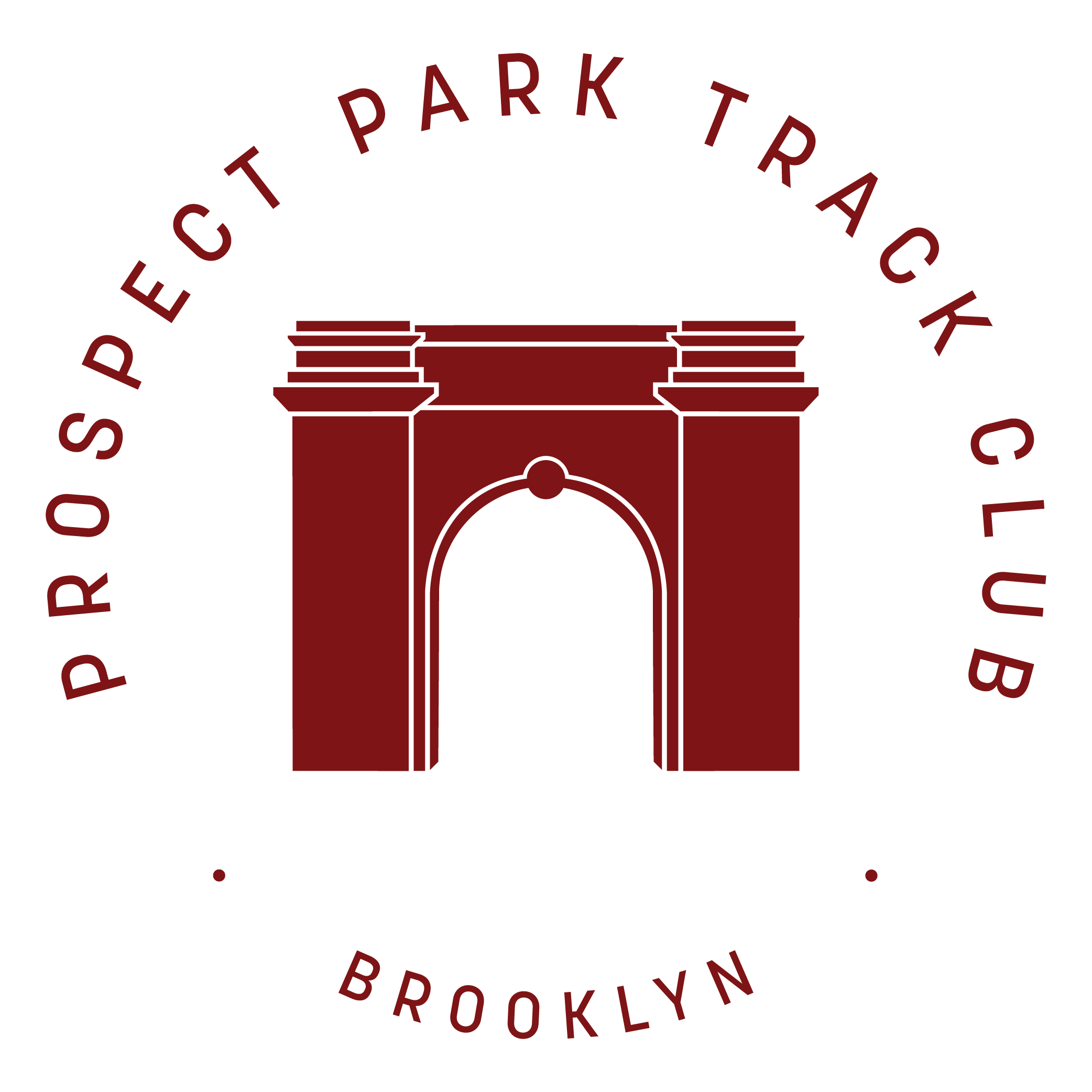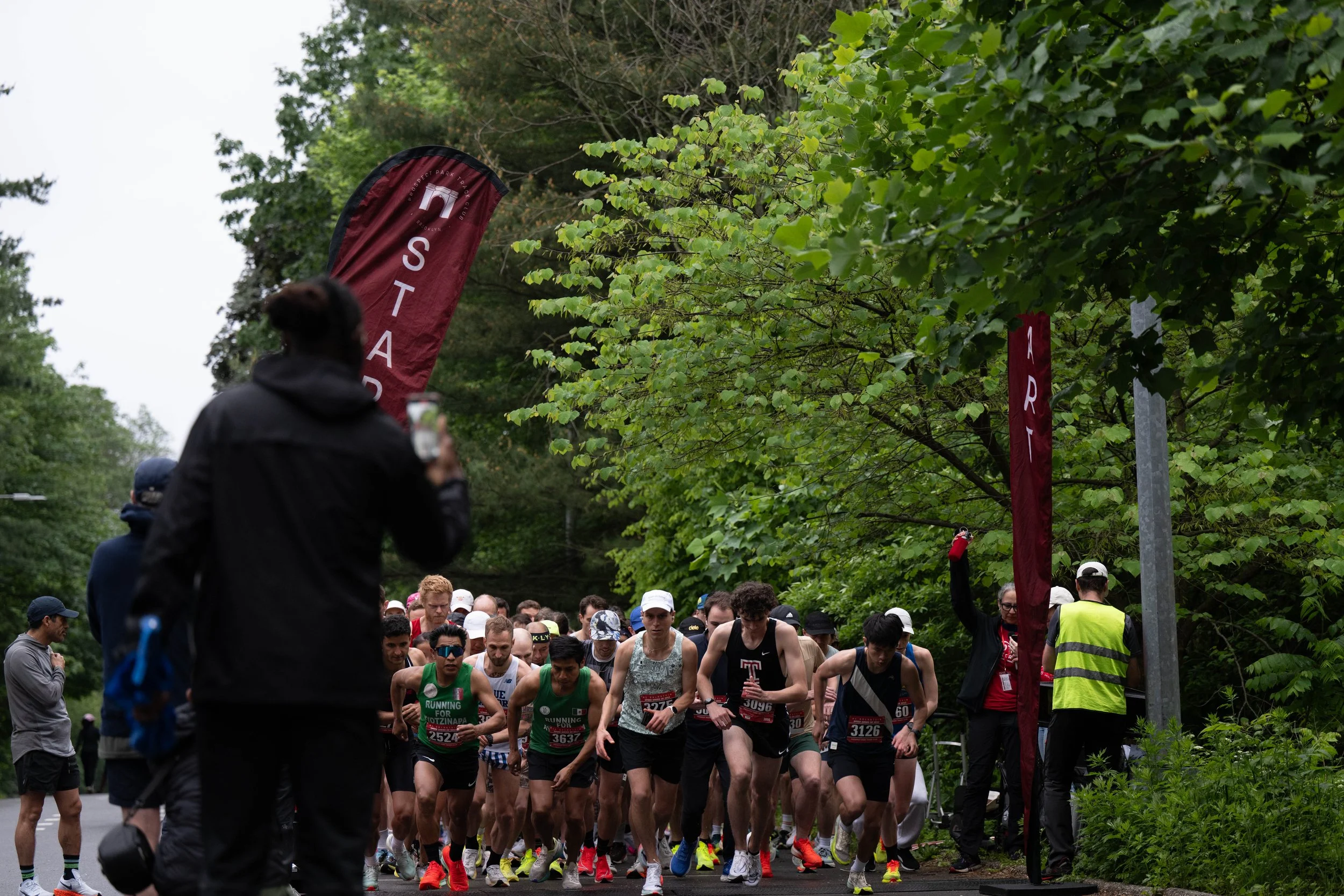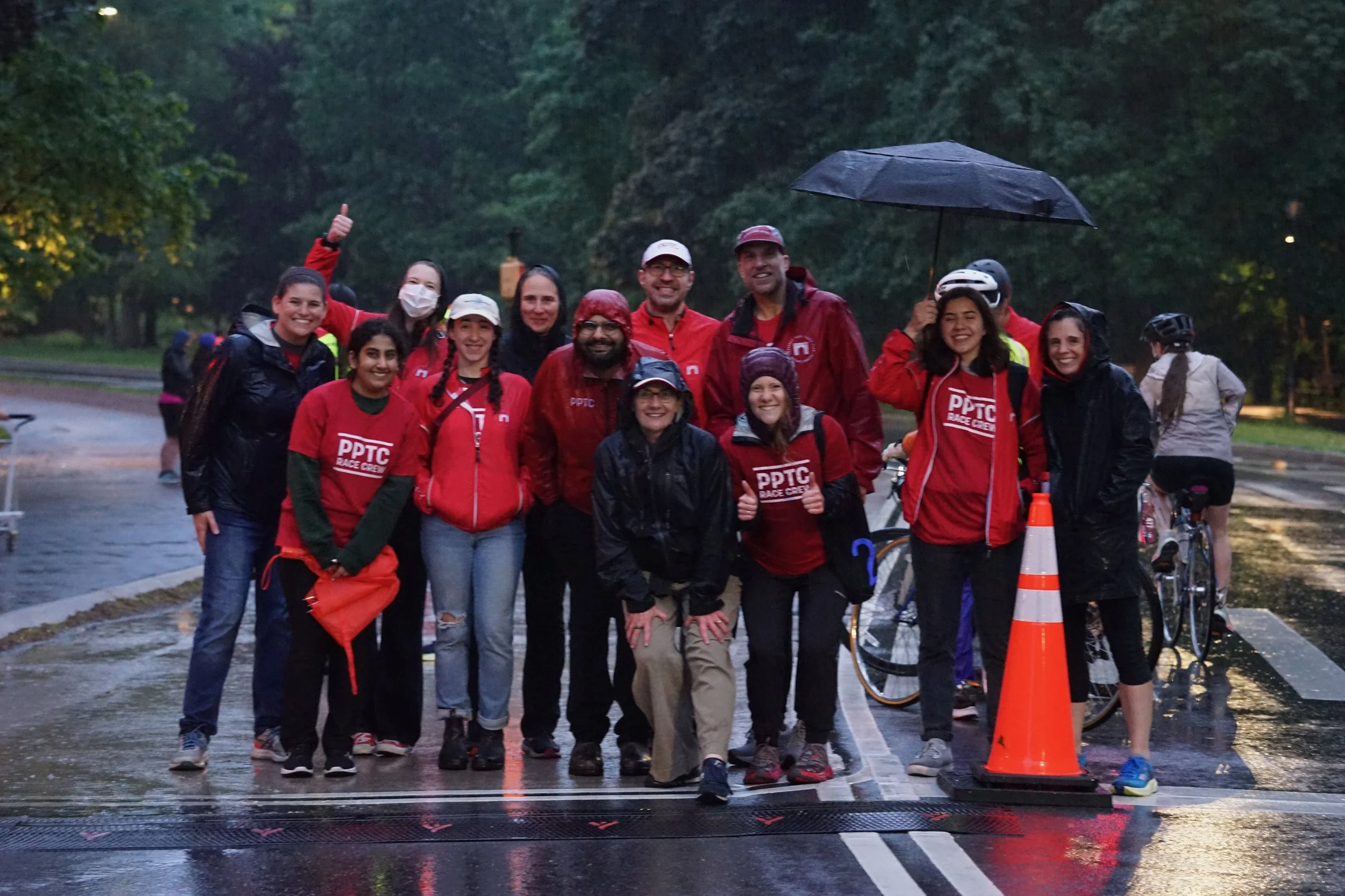AGSS: A Race Built for and by Community
I love witnessing the transformations that unfold over the many weeks of a training plan for a half-marathon or marathon. Training for the New York City Marathon, for example, begins in the sultry weeks of July and concludes just as the fall colors are at their peak in the city; over that time, the many miles I run day after day work their magic on my body, preparing me to endure the 26.2-mile trip through the five boroughs in early November.
The start line of AGSS is a big moment for both racers and organizers. Here, the bikers, who lead the runners around the course, are also shown waiting for the start.
Photo by: Alex Cohn
Prospect Park Track Club’s Al Goldstein Speed Series (AGSS) has a similar quality. The first of the series of seven 5K races organized by PPTC is held in late May, when the weather is often cool—this year, cool and rainy. And then, over alternate Wednesday evenings, the weather gets hot and humid, and the threat of thunderstorms sometimes looms, until the last race is held in mid-to-late August. Over that time, series bib holders test their speed, seeing how much faster they can run in August than the benchmark they set in May. Over that time, too, PPTC’s junior race directors (RDs) gradually get the experience they need to direct a race by the end of the series.
While all eyes may be on the runners, take a peek at the right side of the photo where you can see junior RDs taking care of the pre-race instructions and the start horn.
Photo by: Jaime Ricart
This year, six junior RDs have taken on the responsibility of shadowing the AGSS RDs, learning the ins and outs of directing a race, and ultimately directing races #5, #6, and #7: Alex Asnes, Nicole Lang McDonald, Jennifer Marik, Mark Pearce, Thomas Nam, and Hope Slon. Those I spoke to—Nicole and Mark, who directed race #5 this year, as well as Sarah Quinlan, a 2022 junior RD who is one of the three series directors this year (the others are Crystal Cun and Brian Schwartz)—gave a few different reasons for volunteering in this way. “It sounded like fun,” said Mark, who is in his first year in the club and saw the junior RD program as a way to get to know more club members. Sarah, having been a runner since she was thirteen, was curious how a race comes together. “It seems seamless from the outside, when you just run the race,” she said.
As any race volunteer knows, quite a bit of work goes into that seeming seamlessness, but in PPTC, that work is shared. As Mark joked, the illusion that being an RD is a lot of work “is great, because everyone thinks you are putting in a vast effort,” but it’s hardly as onerous as you might think, “because we have such a great club with lots of volunteers, lots of people doing little bits of work.” Also, the club has a deep bench, with a Race Committee full of experienced members—some with years and even decades of experience. “You’ve got huge amounts of help,” said Mark.
In fact, Nicole said, “The biggest lesson I had to learn is that sometimes less is more.” Contrary to how things tend to go in her profession as a lighting director for live events, she said, in a race, “The better it’s going, the less you should be doing as an RD.”
The start/finish line crew from AGSS #1
Photo by: Will Ngo
I had imagined that one might need extensive experience with as many volunteer positions as possible before learning to be an RD, but both Nicole and Mark emphasized that the junior RD program is really for anyone serious about learning what it takes to be an RD. As Mark said, “It‘s not hugely daunting to get involved. You aren’t on your own.” He and Nicole, for example, faced a common challenge on the day of their race: a forecast of heat, humidity, and possible thunderstorms. Such a forecast presents RDs with lots of different options, including holding the race as an untimed fun run or canceling it altogether. “Everybody else on the committee was super, super helpful in guiding us toward those decisions,” said Nicole. “It wasn’t all on us to make that decision; we could turn to other people and get their advice.” In the end, the race went smoothly.
The biggest reward for a well-run AGSS race, everyone agrees, is community. “It’s a race for everybody,” said Nicole—including members of PPTC, members of other clubs, and local folks. It’s relatively accessible, said Mark, “In terms of cost, it’s dirt cheap. The location is great.” And, as different communities come together for the race, they bring a sense of fun and camaraderie to the park. “The first race can feel like a little reunion,” said Sarah.
Camaraderie, shown here, is common amongst AGSS runners.
Photo by: Jaime Ricart
And Brooklyn’s running community keeps coming throughout the summer because, as Sarah said, the AGSS provides “a way to be motivated when it’s hot out, and a way to get faster as runners look ahead to the fall races. . . . People feel really proud of doing all seven races or just one.”
The junior RDs find community in this series as well. “I got to meet a bunch of interesting people . . . the people who make the club exist,” said Mark. And, said Nicole, “Getting to bond with the other junior RDs has been really lovely. I’m glad that I’ve gotten to meet all of them.”
Text by: Rachael Nevins (she/her)
Produced by: Rachael DePalma (she/her)
Photos by: as noted in the captions
PPTC is a diverse and supportive team. We want to celebrate the diversity of our club and membership. We welcome and encourage everyone to share their stories with us.




